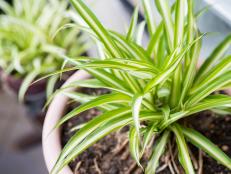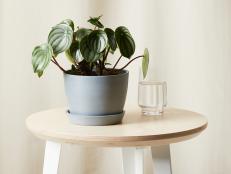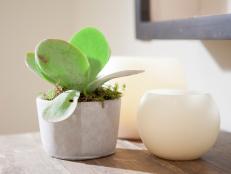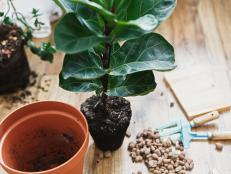Fishtail Palm Care
Learn about growing flashy and splashy fishtail palm—indoors and out.

Image courtesy of RealPalmTrees.com
Give your home a touch of the tropics with graceful fishtail palm. Known botanically as Caryota, this palm adapts readily to indoor settings, and in warm regions can survive outdoors, too. Fishtail palm is hardy to 15°F (Zone 8b). That means you can include it in landscapes in places like Louisiana, Texas, Georgia, Alabama and Florida. Caryota mitis is the fishtail palm most commonly sold for houseplant and landscape use.
Leaves bring a beautiful texture to settings. An unusual triangular form features a jagged edge and ruffled appearance that resembles a fish tail or fin. It’s probably one of the most elegant looking palms, bringing an upscale look to any room or garden. Fishtail palm is a slow grower, especially when grown indoors.
In the wild, fishtail palm is an understory tree, one that grows in the filtered light beneath taller trees. Protect it from direct sun in the hottest part of the day when you include it in the landscape. Outdoors, place this palm beneath taller palms or other trees or in a sheltered courtyard. Grow fishtail palm as a houseplant, and you want to provide as much light as possible.
Fishtail palms are thirsty plants. Make sure soil drains well, and then aim to keep it consistently moist. This palm’s thirst makes it difficult for it to survive in places like California, where hot, drying winds prevail. If you’re growing fishtail palm in a container outdoors, be sure to use a saucer beneath it. Just don’t let pots sit in water overnight, or you risk root rot.
For houseplant fishtail palms, top problems are keeping soil and air moist enough. Use a peat-based soil mix containing materials like coir, perlite and pine bark to improve drainage and help prevent overwatering. Improve humidity in dry indoor air by using a humidifier, misting plants daily or setting pots on trays of pebbles with water maintained to just below pebble level. Dry air frequently leads to leaf tip burn or yellowing and outbreaks of spider mites.
Like all palms, fishtail palm has specific nutritional needs. Use a palm fertilizer, applying it at the rates recommended on the label. Many palm growers recommend watering fishtail palm first before applying fertilizer to help prevent root-burn by fertilizer salts.
The most common reason fishtail palms die indoors is low light, followed by cool, too-dry air. Fishtail palms grow slowly, and a palm can actually be in decline for a few years before you realize there’s a problem. Your best bet for success with growing fishtail palm indoors is to increase humidity and light. Also, remember these are tropical plants that crave temperatures well above 55°F.














































